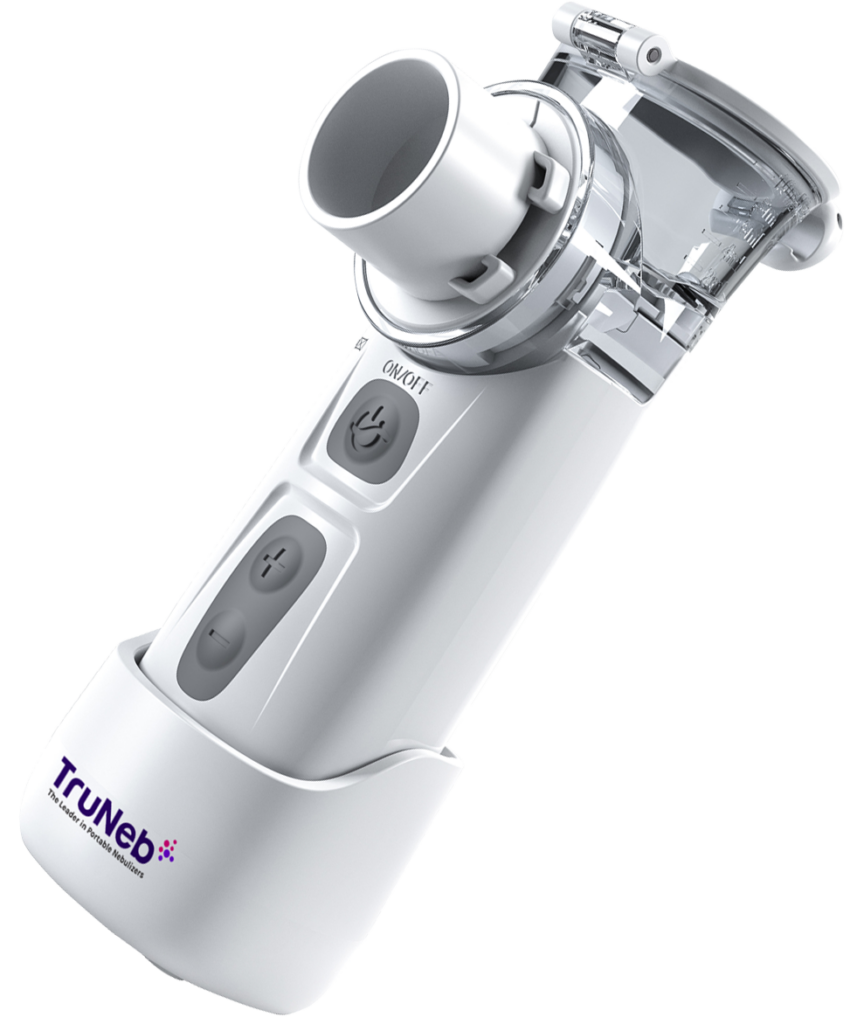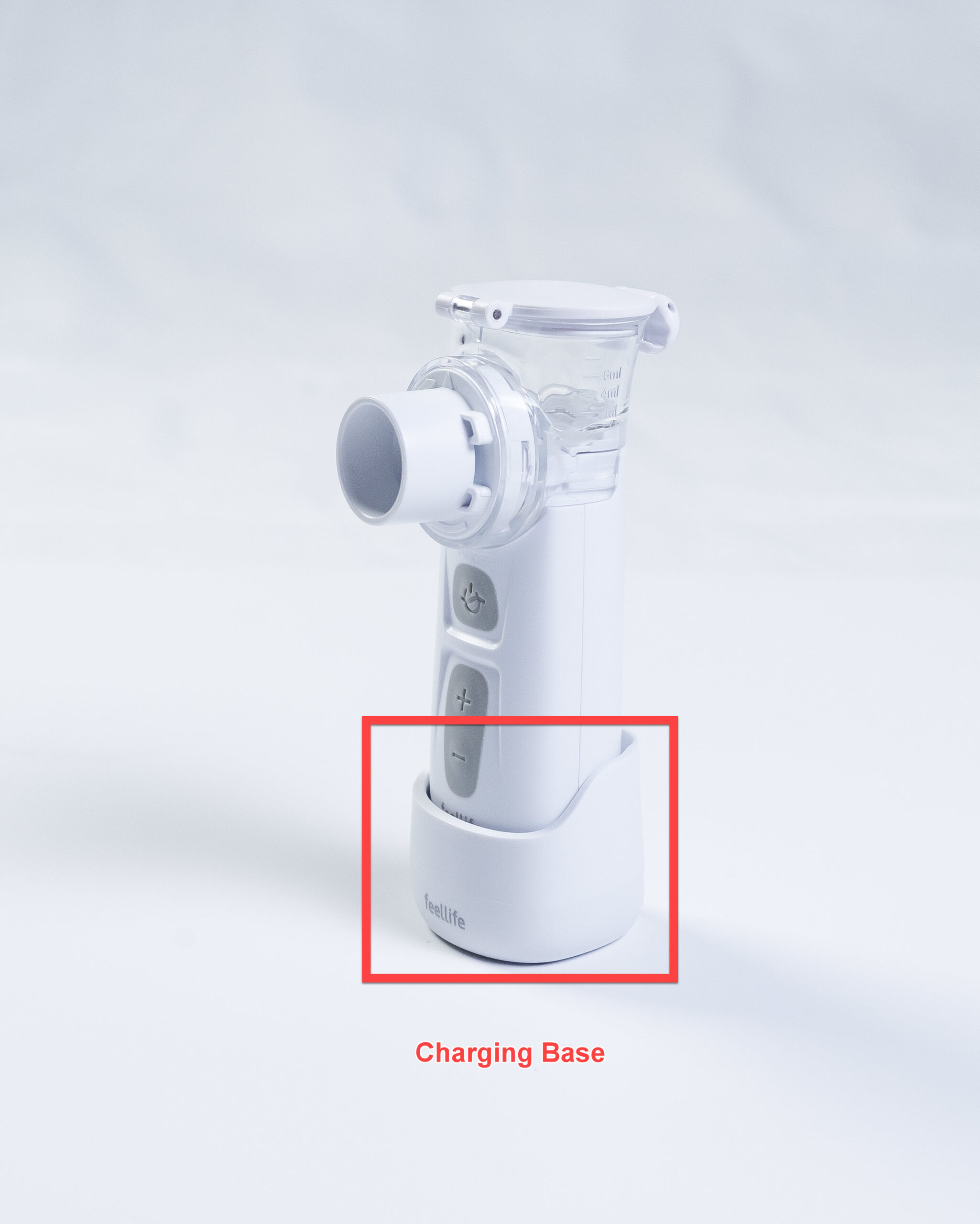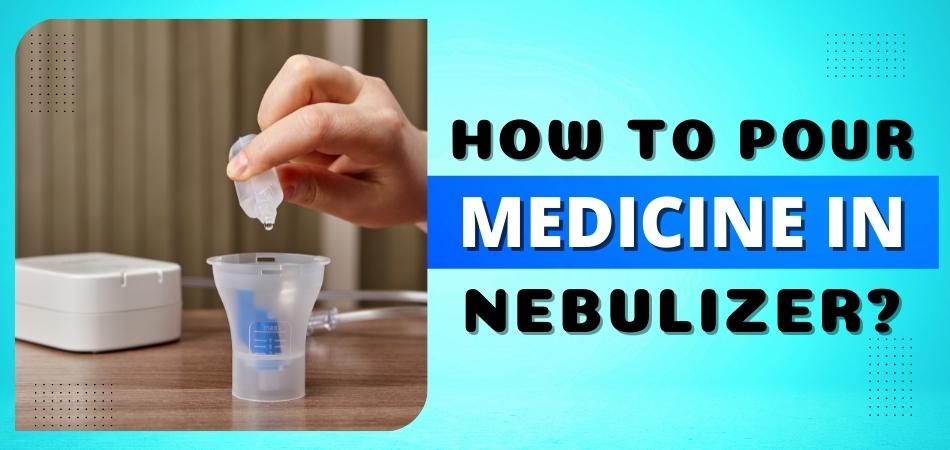When it comes to the Drive nebulizers how to use, it is important to consult with a medical professional beforehand. Nebulizers come in different types and sizes, so depending on the model you have, there may be slight variations on how to operate them.
Generally speaking, though, most nebulizers work in a similar way: you attach the device to the mouthpiece or face mask, turn it on, and breathe in the medication as directed by your doctor.
The amount of time you will need to inhale the medication will vary depending on the type of nebulizer you are using. Always follow your doctor’s instructions carefully when using a drive nebulizer.
It is also important to keep your nebulizer clean and stored properly between uses. Consult with your doctor or pharmacist for specific cleaning instructions.
Drive Nebulizer: What is It?
A Drive Nebulizer is a small, hand-held device that delivers medication to the lungs in the form of a mist. It is powered by batteries or an AC adapter and can be used with either a mouthpiece or mask. The medication is placed in a cup, and the nebulizer produces a fine mist that is inhaled through the mouthpiece or mask.
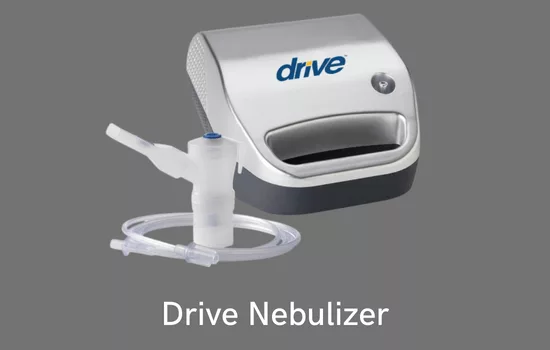
The inhalation of the medication allows it to directly target the lungs, where it can be most effective. Drive Nebulizers are particularly portable, making them ideal for use while traveling. They are also relatively quiet, making them less disruptive to others in close proximity.
Nebulizers are often used to deliver bronchodilators and steroids to patients with asthma or COPD. They can also be used to deliver antibiotics and other medications to people with respiratory infections. The use of a nebulizer can help to reduce symptoms and improve the quality of life for people with chronic respiratory conditions.
How Does Drive Nebulizer Work?
A nebulizer is a machine that converts liquid medication into a mist, which can then be inhaled through a mask or mouthpiece. Drive Nebulizers are small, portable, and battery-operated, making them an ideal choice for people who need to take their medication with them on the go.
To use a Drive Nebulizer, simply add the prescribed amount of liquid medication to the chamber, attach the mouthpiece or mask, and turn on the power. The nebulizer will then convert the medication into a fine mist, which can be inhaled deeply into the lungs.
This type of delivery system is especially beneficial for people with respiratory conditions such as asthma or COPD, as it allows them to get the medication directly to their lungs where it is needed most.
Drive Nebulizers are simple to use and provide an efficient way to receive much-needed medication.
How to Use a Drive Nebulizer?
A nebulizer is a device that helps you breathe in medication as a fine mist. Drive nebulizers are small, lightweight, and portable, making them easy to take with you wherever you go. Here’s how to use a drive nebulizer:
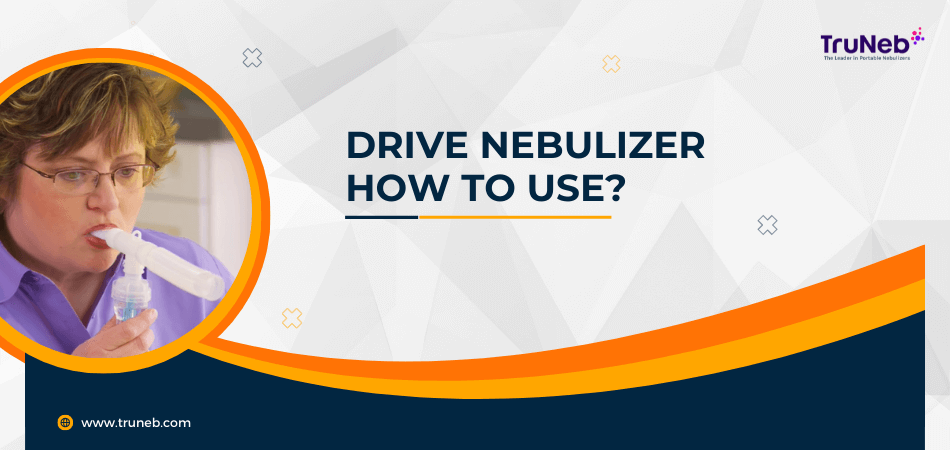
First: Gather all of the supplies you’ll need: the nebulizer base, cup, mouthpiece, tubing, and medication. Fill the cup with the recommended amount of water and screw it onto the base. Then, add the medication to the cup and screw on the cover.
Next: Attach the tubing to the mouthpiece and fit the mouthpiece over your mouth and nose. Turn on the nebulizer and breathe normally for about 10-15 minutes or until all of the medication has been used.
Finally: Disconnect the tubing from the mouthpiece and unscrew the cup from the base. Make sure to rinse out the cup and mouthpiece with warm water and allow everything to air dry.
With these simple steps, you can easily use a drive nebulizer to get your medication anywhere you go!
Tips for Using a Drive Nebulizer
A drive nebulizer is an important tool for many people with respiratory conditions. The device helps to deliver medication directly to the lungs, allowing people to breathe more easily. However, using a nebulizer can be a bit tricky, so here are a few tips:
First, make sure that you have the right size nebulizer for your particular condition. The device should fit snugly over your nose and mouth, and the tubing should be long enough to reach from your mouth to the machine.
If you are using a mask, it should be comfortable and not leak.
Next, prepare your medication according to the instructions on the bottle. You will need to use a clean cup or container to measure the correct amount of medication, as well as sterile water if directed.
Once the medication is ready, turn on the nebulizer and place the medication cup or container under the mouthpiece.
Finally, breathe slowly and deeply through your mouth while holding the mouthpiece in place. It is important not to swallow during this process, as this can cause the medication to be deposited in your gastrointestinal tract instead of your lungs. After about 10-15 minutes, turn off the machine and remove the mouthpiece.
Rinse your mouth out with water and Spit any residual medication into a wastebasket. Wash all equipment thoroughly with soap and water after each use.
How to Clean Drive Nebulizers?
Drive nebulizers are a type of medical equipment that helps deliver medication to the lungs in the form of a mist. They are often used to treat respiratory conditions such as asthma, COPD, and cystic fibrosis.
While nebulizers are generally very safe and easy to use, it is important to clean them regularly to prevent the growth of bacteria and other harmful microorganisms.
Here are some simple steps for cleaning a drive nebulizer:
- Remove all parts from the nebulizer, including the mask or mouthpiece, tubing, and medication cup.
- Rinse all parts with warm water.
- Use a mild soap or detergent to scrub all parts, paying special attention to any areas that may be dirty or have buildup.
- Rinse all parts again with warm water.
- Allow all parts to air dry completely before reassembling the nebulizer.
Cleaning your nebulizer on a regular basis will help ensure that it works properly and prevent the spread of infection. Always consult your healthcare provider if you have any questions or concerns about cleaning your nebulizer.
When Not to Use a Drive Nebulizer
If you have asthma, COPD, or other chronic respiratory condition, you may have been prescribed a nebulizer. Nebulizers are devices that turn liquid medication into a fine mist that can be inhaled deeply into the lungs.
There are two types of nebulizers: compressor and battery-operated. Compressor nebulizers are larger, heavier, and must be plugged into an outlet. Battery-operated nebulizers are smaller and more portable.
Nebulizers are generally safe and effective, but there are some situations when you should not use one.
- If you have an acute asthma attack or COPD exacerbation, do not use a nebulizer. Instead, use your rescue inhaler as directed by your doctor.
- If you are using a metered dose inhaler (MDI), do not use a nebulizer. MDIs are just as effective as nebulizers and do not require electricity or batteries.
- If you are using oxygen, do not use a nebulizer. Oxygen and nebulized medication should not be used at the same time.
- If you have any questions about whether or not you should use a nebulizer, talk to your doctor or pharmacist.
Alternatives of Drive Nebulizer
In general, there are three types of nebulizers: jet, ultrasonic, and mesh. Jet nebulizers use compressed air to turn liquid medication into a fine mist that can be inhaled. Ultrasonic nebulizers use sound waves to create the mist.
Mesh nebulizers are the newest type of nebulizer on the market. They use a mesh to create an ultrafine mist that is easier for the lungs to absorb. One of the best portable mesh nebulizers you will find is the TruNeb™. This portable mesh nebulizer is easy to use and provides noise-free breathing treatment.
There are more brands of nebulizers on the market, including Drive, Omron, Philips Respironics, and more. While there are many different types and brands of nebulizers, they all have one common goal: to deliver medication to the lungs in the form of a mist.
The Drive Medical Nebulizer is a jet nebulizer that uses compressed air to create a fine mist of medication that can be inhaled. The Nebulizer comes with a compressor, air tubing, mouthpiece, and medication cup. It is important to note that the Drive Medical Nebulizer is not a portable nebulizer and must be used with an electrical outlet.
The Omron MicroAir Nebulizer is an ultrasonic nebulizer that uses sound waves to create a fine mist of medication that can be inhaled. The Nebulizer comes with a compressor, air tubing, mouthpiece, and medication cup. It is important to note that the Omron MicroAir Nebulizer is not a portable nebulizer and must be used with an electrical outlet.
The Philips Respironics InnoSpire Elegance Compressor Nebulizer System is a mesh nebulizer that uses a mesh to create an ultrafine mist of medication that can be inhaled. The Nebulizer comes with a compressor, air tubing, mouthpiece, and medication cup. It is important to note that the Philips Respironics InnoSpire Elegance Compressor Nebulizer System is not a portable nebulizer and must be used with an electrical outlet.
While there are many different types and brands of nebulizers, they all have one common goal: to deliver medication to the lungs in the form of a mist. If you are looking for an alternative to the Drive Medical Nebulizer, there are several other options on the market that may be a better fit for you.
How to Get the Most Out of Your Drive Nebulizer
If you have COPD, bronchitis, or another chronic respiratory condition, you may benefit from using a nebulizer.
A nebulizer is a small, portable machine that turns liquid medication into a fine mist that you can inhale. Drive Medical offers some of the best nebulizers on the market, so if you’re in the market for one, be sure to check out their selection.
Here are a few tips to help you get the most out of your Drive nebulizer:
- Follow the manufacturer’s instructions for use. This may seem like a no-brainer, but it’s important to read and follow the directions that come with your nebulizer. Drive provides clear and concise instructions with their nebulizers, so be sure to review them before using your machine.
- Use distilled water in your nebulizer. Tap water can contain impurities that can damage your nebulizer or reduce its efficacy, so it’s important to use only distilled water in your machine.
- Clean your nebulizer regularly. It’s important to clean your nebulizer after each use to prevent the buildup of bacteria and other contaminants. The drive includes a cleaning brush with their nebulizers, so be sure to use it to clean all of the nooks and crannies of your machine.
- Store your nebulizer properly. When you’re not using your nebulizer, be sure to store it in a cool, dry place. Drive provides a storage bag with their nebulizers, so be sure to use it to keep your machine clean and dust-free.
- Use only Drive replacement parts. If you need to replace any parts on your nebulizer, be sure to use only Drive replacement parts. Using other brands of replacement parts can damage your machine or void your warranty.
FAQs for Drive Nebulizer
How often do I need to use my Drive Nebulizer?
Your doctor will likely tell you how often to use your nebulizer, but typically it is once or twice daily. Always follow your doctor’s instructions.
Can I use my Drive Nebulizer while pregnant or breastfeeding?
You should always consult your doctor before using any medication while pregnant or breastfeeding.
How long does it take for the Drive Nebulizer to work?
The Drive Nebulizer typically works within minutes. You should start to feel relief from your symptoms soon after using it.
Will my insurance cover the cost of the Drive Nebulizer?
Most insurance plans will cover the cost of the Drive Nebulizer. However, you should always check with your specific insurance provider to be sure.
Is the Drive Nebulizer covered by a warranty?
Yes, the Drive Nebulizer comes with a one-year limited warranty.
Conclusion
Nebulizers can be a great way to get medication into your system, but they can also be difficult to use if you don’t know how.
Hopefully, this article has helped clear up any confusion and give you the information you need to start using your nebulizer correctly.
Remember, always consult with your doctor before beginning any new treatment regimen. Thanks for reading!
